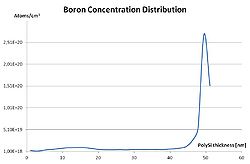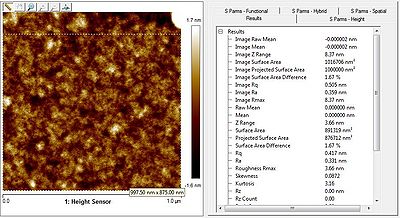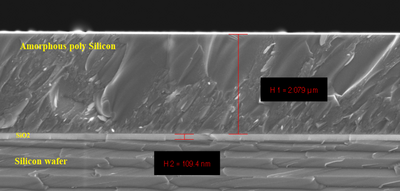Specific Process Knowledge/Thin film deposition/Deposition of polysilicon/Deposition of polysilicon using LPCVD/Standard recipes, QC limits and results for the 4" polysilicon furnace
Feedback to this page: click here
Unless otherwise stated, this page is written by DTU Nanolab internal
Standard recipe on the 4" polysilicon furnace (this recipe is being watched in the in the quality assurance program):
| Quality Controle (QC) for the 4" polysilicon furnace | ||||||||||||||||||||
|
Expected results when using the standard recipe on the 4" polysilicon furnace:
| QC Recipe | Polysilicon deposition
rate [nm/min] |
Uniformity of the
polysilicon deposition rate [%] |
Refractive index | Uniformity of the
refractive index [%] | ||
|---|---|---|---|---|---|---|
| Over one wafer
4" wafers
|
"POLY620" | 10.60 | 0.91 | 3.93 | 0.36 | |
| Over the boat
4" wafers
|
"POLY620" | 10.34 | 3.08 | 3.89 | 2.84 | |
| Over one wafer
4" wafers
|
"POLY620" | 9.77 | 1.57 | 3.9578 | 0.63 | |
| Over the boat
4" wafers
|
"POLY620" | 9.60 | 1.65 | 3.960 | 0.66 |
Process parameters for the standard recipes on the 4" LPCVD polySi furnace:
| Recipe name | Wafer size and number of wafers | PolySi thickness [nm] | Temperature [oC] | Pressure [mTorr] | SiH4 gas flow [sccm] | B2H6 gas flow [sccm] | PH3 gas flow [sccm] | Comments |
|---|---|---|---|---|---|---|---|---|
| "POLY620" | 4" wafers
1-30 wafers |
0 - 2000 | 620 | 200 | 80 | 0 | 0 | |
| "POLYBOR" | 4" wafers
1-30 wafers |
0 - 2000 | 620 | 200 | 80 | 7 | 0 | New recipe name September 2012 (before "POLY620PX"). |
| "POLYPHOS" | 4" wafers
1-30 wafers |
0 - 1000 | 620 | 200 | 80 | 0 | 7 | New recipe name September 2012 (before "TH3POLY"). |
| "AMORF580" | 4" wafers
1-30 wafers |
0 - 2000 | 580 | 250 | 80 | 0 | 0 | |
| "AMORF560" | 4" wafers
1-30 wafers |
0 - 2000 | 560 | 250 | 80 | 0 | 0 | |
| "AMORBOR" | 4" wafers
1-30 wafers |
0 - 2000 | 580 | 250 | 80 | 7 | 0 | |
| "AMORPH3" | 4" wafers
1-30 wafers |
0 - 2000 | 580 | 250 | 80 | 0 | 7 |
Expected results when using the standard recipes on the 4" LPCVD polySi furnace:
These are typical values
| Recipe name | Deposition rate [nm/min] | Refractive index@630nm | Thickness variation on center wafer | Thickness variation along the boat | Surface roughness [nm] or SEM images | Boron concentation [boron atoms/cm3] | Comments |
|---|---|---|---|---|---|---|---|
| "POLY620" | ~ 10-12 | ~ 3.9 | < 2% | < 5% | See quality control data for latest measurements | ||
| "POLYBOR" | ~ 10-12 | ~ 1018 boron atoms/cm2. Azeem Zulfigar, DTU Nanotech, Feb. 2013. | |||||
| "POLYPHOS" | ~ 2 | ||||||
| "AMORF580" | ~ 4 | ||||||
| "AMORF560" | < 4 |
Measured by AFM for 234 nm amorphours polySi:
Anders Simonsen, KU, May 2016 |
|||||
| "AMORBOR" | ~ 5 | ||||||
| "AMORPH3" | ~ 1 | ||||||
| "AMOR540" (requires a special permission) | ~ 1.4 | Cross section image by SEM:
Lars Kildebro, NILT, June 2020 |
The deposition rate changes a little over time, but generally it is fairly good from run to run. The last measured values of the polySi thicknesses can be found on the POLY page in the Furnace logbook and in the quality control data (only standard polySi).


